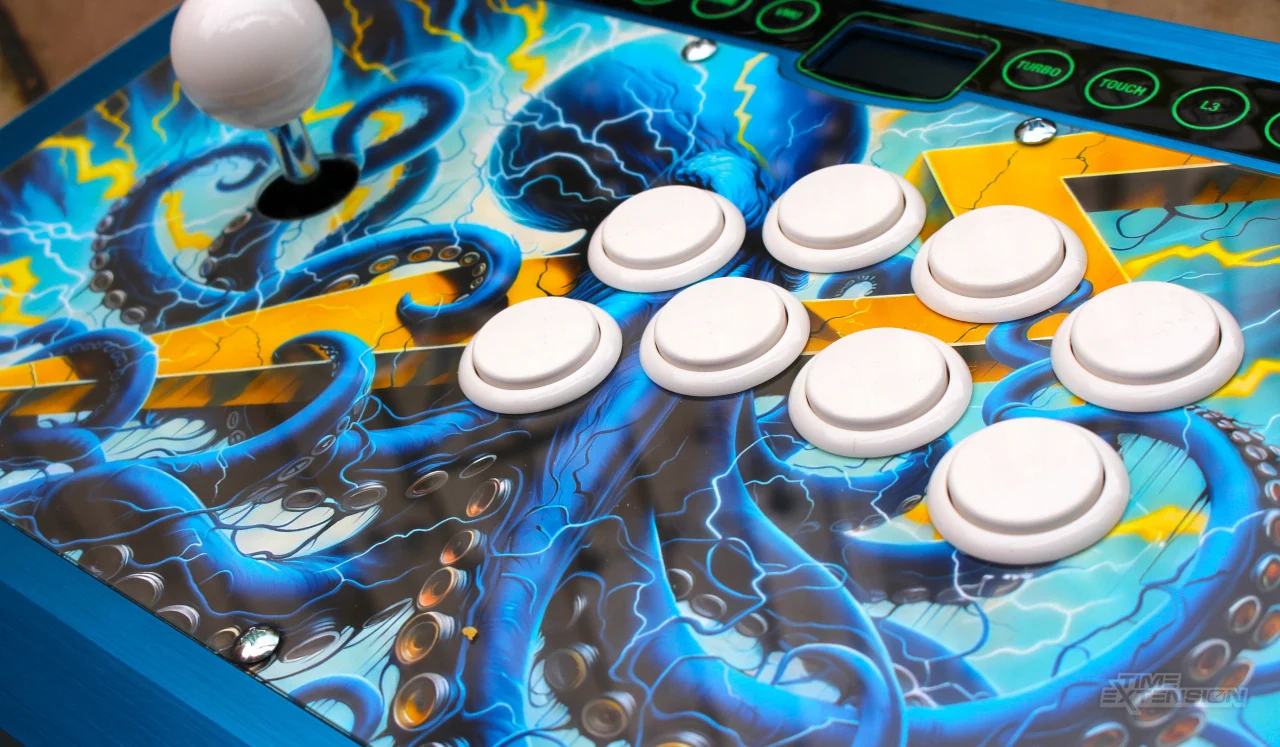Reviews
Octopus TR Fight Stick Review: A Fresh Take on Classic Arcade Control

As someone who grew up surrounded by the sound of clicking buttons and the glow of CRT arcade machines, I’ve always been on the hunt for a fight stick that revives that same nostalgic thrill. Recently, I had the chance to put the Octopus TR Fight Stick through its paces, and it left a lasting impression. This octopus tr fight stick review will take you through every facet of the controller—from design and responsiveness to compatibility and performance—to see if it lives up to expectations for retro and modern fighting game fans alike.
Getting Started: Out of the Box and First Look
Unboxing the Octopus TR Fight Stick felt like an event in itself. The packaging was neatly organized and immediately conveyed a premium tone. Once I lifted the stick out of the box, I could tell it was built with durability in mind. It’s substantial in weight—enough to stay steady during gameplay without being overly bulky. The exterior shell uses reinforced ABS plastic combined with a metal undercarriage, making it sturdy enough to handle competitive play.
The overall look is a fusion of old-school arcade nostalgia and sleek, modern design. The top panel features a clear acrylic overlay with room for artwork customization, while the base includes rubber grips that keep the unit firmly planted on your gaming surface. There’s also a gentle underglow of LED lights, giving it that cool ambiance without being over-the-top.
Layout and Build Quality
When I sat down to test the control layout, the first thing I noticed was how naturally everything was positioned. The buttons are spaced evenly and mimic the layout found in traditional arcade cabinets. Each press feels precise and satisfying, thanks to the premium microswitches used in the buttons. The stick itself uses a Japanese-style ball top with a smooth pivot and solid directional feel.
If you’re used to the stiffness of cheaper sticks or the occasional input errors from third-party devices, this one will be a breath of fresh air. The input registration is instantaneous and reliable. The Octopus TR Fight Stick is clearly built for accuracy and quick response, which is critical when you’re executing fast-paced combos or tricky directional moves.
The panel is also designed with modders in mind. It opens easily with a latch system, giving you quick access to the internal wiring and allowing for easy swaps or upgrades if you prefer different buttons, sticks, or switches.
Performance Across Multiple Games
In this octopus tr fight stick review, I wanted to thoroughly test the unit across a wide variety of games to assess its flexibility. I started with some classics like Street Fighter III: Third Strike and Samurai Shodown II. The stick handled both perfectly, with tight input precision and satisfying tactile feedback. I was able to pull off complicated specials like Zangief’s spinning piledriver and Akuma’s raging demon without a hitch.
Switching over to Tekken 7 and Dragon Ball FighterZ, the Octopus TR continued to impress. While 3D fighters demand more lateral input precision, this stick handled sidestepping and diagonal movement seamlessly. I never felt the need to second-guess my inputs, which made it easier to stay focused on the gameplay rather than the hardware.
Even outside of fighting games, I experimented with beat ‘em ups and side-scrolling action titles like Final Fight, Turtles in Time, and Contra III. The stick maintained its reliability and comfort across genres, making it a solid option even if fighting games aren’t your main focus.
Platform Support and Connection Options
A key feature I always look for is multi-platform support. Many modern fight sticks lock you into one console, which can be frustrating if you’re a multi-platform gamer. Fortunately, the Octopus TR Fight Stick offers impressive versatility. It supports PC, PlayStation 4 and 5, Nintendo Switch, and even Android devices. While it doesn’t natively support Xbox consoles, there are workarounds using compatible passthrough controllers or adapters.
The stick includes both wired and wireless connectivity. The wired mode uses a detachable USB-C cable that provides fast data transmission with zero lag. When switching to wireless via Bluetooth, I was pleasantly surprised by how responsive it remained. I clocked hours of gameplay on Bluetooth without encountering input delays or dropped connections.
For tournament players or anyone worried about latency, wired mode is your best bet. But for casual play or couch gaming, the wireless performance more than holds up.
Customization and User Features
One aspect I really appreciated during this octopus tr fight stick review was the attention to detail in terms of customization. Beyond the internal modding potential, the controller includes programmable macros, turbo functionality, and adjustable LED lighting. If you enjoy tailoring your gear to match your playstyle or aesthetic preferences, this stick won’t leave you wanting.
There’s also a handy switch on the side to toggle between D-pad, left analog, and right analog input modes. This is particularly useful for games outside the fighting genre or when using emulators. The on-board profile memory lets you save different button mappings for different games, so you don’t need to reconfigure every time you switch titles.
Another standout feature is the inclusion of a small internal storage compartment. It’s perfect for storing spare buttons, a USB dongle, or even a charging cable. It’s the kind of thoughtful addition that shows the designers considered the needs of players who take their gear on the go.
Ergonomics and Long-Term Use
I spent nearly two weeks testing the Octopus TR Fight Stick across multiple platforms and long play sessions. Comfort was never an issue. The angle of the top panel and the spacing of the buttons reduced strain on my wrists, even after several hours of gameplay.
Heat buildup was nonexistent, and the rubber padding on the bottom ensured it didn’t slide around on my desk or lap. For players who enjoy marathon gaming sessions, that kind of consistency is invaluable. The build strikes the perfect balance between weight, stability, and ease of transport.
Drawbacks to Consider
As much as I’ve enjoyed my time with the Octopus TR, no product is without its limitations. First, the price point is a bit steep for newcomers to the fight stick scene. It falls in the premium category, and while I believe it offers excellent value for its cost, budget-conscious gamers may need to shop around or wait for a sale.
Second, while the Bluetooth works well, the battery life could use an upgrade. I got around six hours of continuous play before needing to recharge. If you’re planning on extended sessions in wireless mode, you’ll want to keep a cable handy.
Lastly, while the stick’s mod-friendliness is a huge plus for enthusiasts, beginners who aren’t comfortable with internal customization might find the options overwhelming.
Final Thoughts
To wrap up this octopus tr fight stick review, I can confidently say that this is one of the most satisfying and reliable arcade-style controllers I’ve used in recent years. It successfully captures the tactile joy of retro arcade machines while incorporating the convenience and features demanded by modern players.
From its solid construction and responsive inputs to its platform versatility and customization options, the Octopus TR Fight Stick checks almost every box. Whether you’re a seasoned competitor looking for tournament-grade gear or a nostalgic gamer aiming to recreate the arcade magic at home, this controller delivers a top-tier experience.
While there are a few minor areas where it could improve—such as battery life and price—those are easily overshadowed by its many strengths. For anyone serious about their fighting game setup, or simply wanting a controller that brings classic arcade spirit into the present, the Octopus TR Fight Stick is well worth considering.










